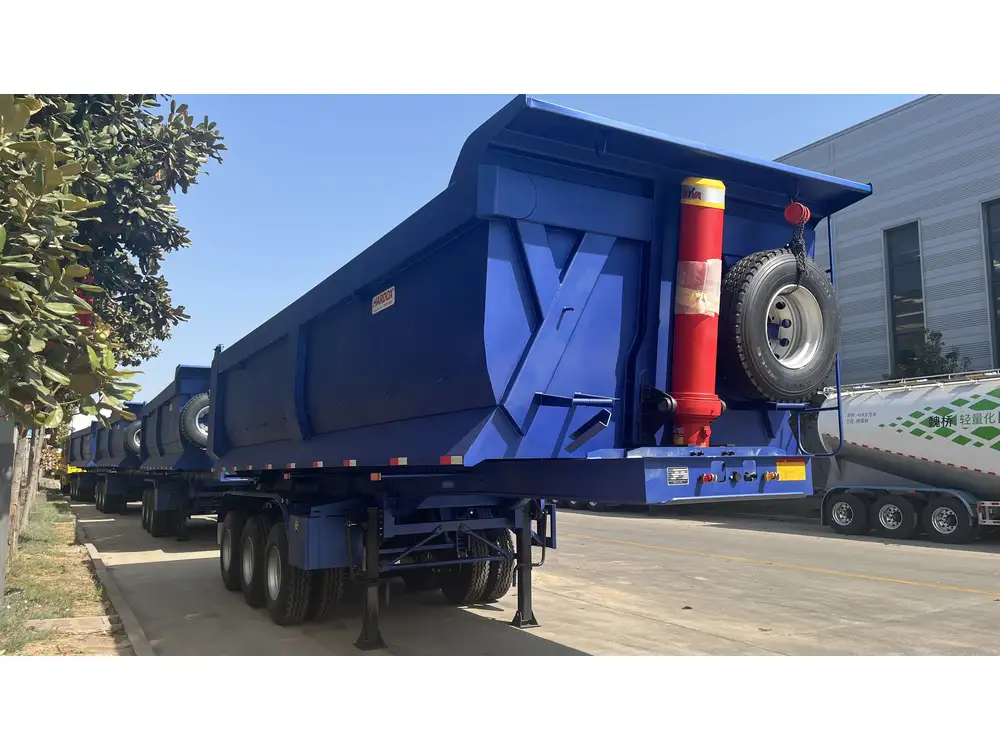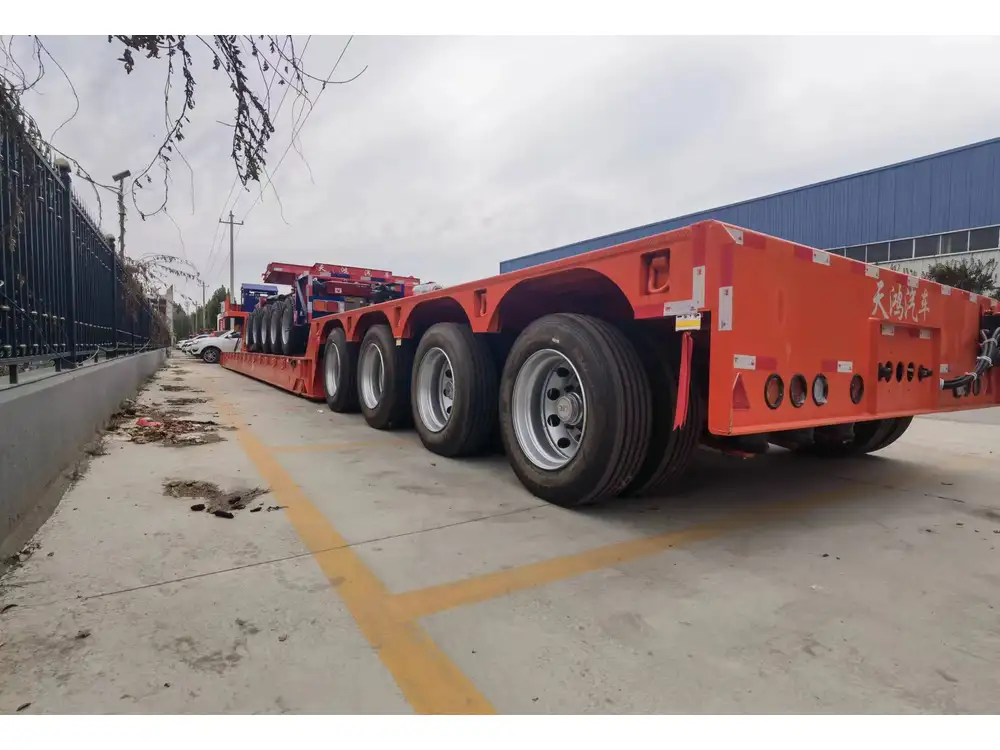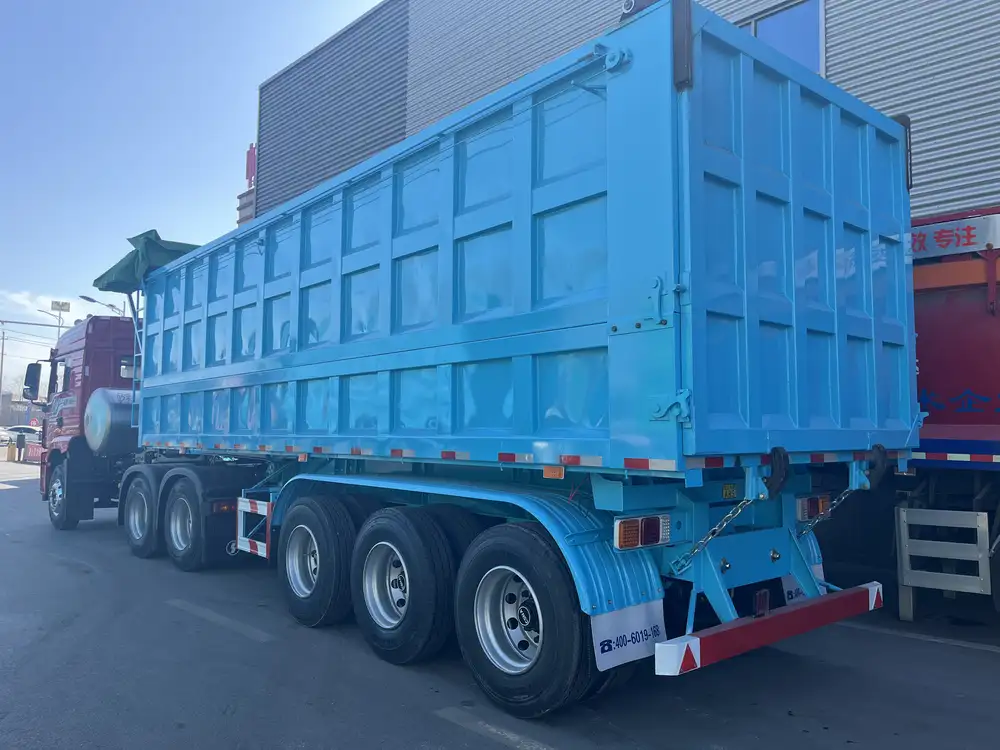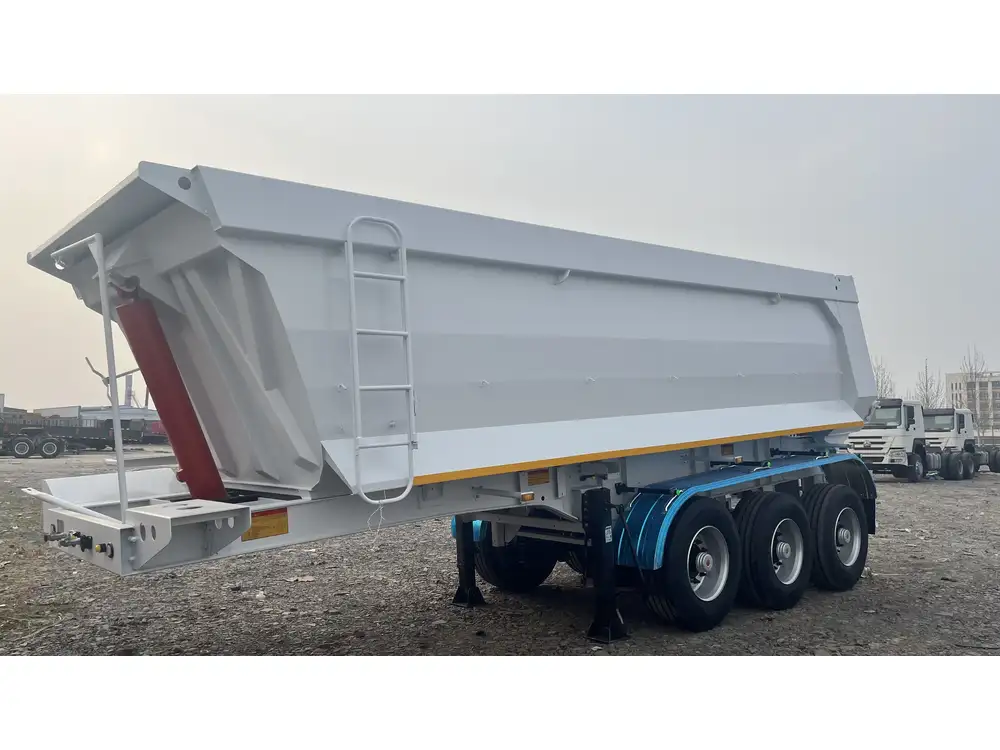Building a dump trailer is an intricate yet rewarding process that requires careful planning, the right materials, and expert craftsmanship. In this guide, we will take you through the essential steps and considerations needed to create a high-quality dump trailer that meets industry standards and satisfies user needs. Whether you’re looking to manufacture dump trailers for construction, landscaping, or other applications, this guide will delve into every aspect of the building process.
Understanding Dump Trailers
What is a Dump Trailer?
Dump trailers are specialized vehicles designed to transport heavy loads such as soil, gravel, and debris. They are equipped with hydraulic systems that allow the bed to be raised, permitting quick unloading of materials. Key components include:
- Trailer Frame: The structural backbone of the trailer.
- Axles: Critical for load distribution and mobility.
- Hydraulic Lift System: Facilitates unloading.
- Dump Bed: The container where the load is stored.
- Wheels and Tires: Provide support and traction for movement.

Construction Applications
Dump trailers serve a multitude of purposes, particularly in the construction and landscaping sectors. Common uses include:
- Material transport (sand, gravel, dirt)
- Site cleanup (debris removal)
- Agricultural purposes (hay, feed transport)
Step-by-Step Guide to Building a Dump Trailer
Step 1: Design and Planning

Create a Suitable Design
Your first step is to develop a comprehensive design for the dump trailer. This involves determining the size, capacity, and overall layout. Consider the following factors:
- Payload Capacity: How much weight will the trailer be required to carry? Typical capacities range from 2,000 to 14,000 pounds.
- Trailer Size: What dimensions suit your targeted application? Lengths of 5 to 16 feet and widths of 4 to 8 feet are common.
- Material Selection: Choose materials that provide durability without excessive weight.
Design Tips:
- Use CAD software to visualize your trailer before building.
- Review relevant industry regulations to ensure compliance.
Step 2: Selecting Materials
Material Considerations
The materials you choose are pivotal to the dump trailer’s longevity and functionality. Key materials include:
- Steel: Strong and durable; ideal for the frame and dump bed.
- Aluminum: Lightweight but provides sufficient strength; preferable for smaller trailers.
- Hydraulic Components: Select high-quality hydraulic cylinders and pumps for reliability.
| Material | Pros | Cons |
|---|---|---|
| Steel | High strength; cost-effective | Heavier; prone to corrosion |
| Aluminum | Lightweight; resistant to rust | More expensive; less strength |
| Composite Materials | Lightweight and corrosion-resistant | Limited load capacity |

Step 3: Gathering Tools and Equipment
Essential Tools for Construction
To efficiently build a dump trailer, you will need a specific toolkit. The following list encompasses essential equipment:
- Welding Machine: For joint assembly of the frame and bed.
- Cutter and Grinder: To shape and smooth various materials.
- Drill and Fasteners: For securing components together.
- Hydraulic Pump: Necessary for the lift system.
- Measuring Tools: Ensure accuracy during assembly.
Step 4: Building the Frame

Constructing the Framework
- Cut Steel Components: Start by carefully cutting the steel (or aluminum) pieces according to your design.
- Assemble the Frame: Using a welding machine, join the components to create a strong frame. Ensure all angles are square to maintain balance.
- Add Cross Members: Install cross members to enhance the frame’s strength and support weight distribution.
Step 5: Fabricating the Dump Bed
Customizing the Dump Bed
- Shape the Bed: The bed can either be square or rounded; cut accordingly.
- Weld the Sides: Attach the sides to the bottom of the bed, ensuring they are watertight to prevent spillage.
- Reinforcements: Add reinforcements to the corners and along the sides to withstand the stresses of heavy loads.

Step 6: Installing the Hydraulic System
Setting Up the Lift Mechanism
- Select the Right Cylinder: Choose hydraulic cylinders that fit the bed’s dimensions and the weight it will lift.
- Attach Hydraulic Lines: Ensure all connections are tight to prevent leaks.
- Mount the Hydraulic Pump: Position the pump in a way that it can efficiently power the system.
Step 7: Adding the Axles and Suspension

Ensuring Structural Integrity
- Position Axles: Based on your load requirement, place axle mounts appropriately. Ensure they are equidistant for stability.
- Install Suspension: Use a reliable suspension system to absorb shocks and enhance ride quality.
- Attach the Wheels: Choose durable tires suited for the terrain where the trailer will predominantly operate.
Step 8: Electrical System Integration
Wiring and Lighting
- Install Electrical Components: Integrate lights, brakes, and any electronic wiring.
- Battery Placement: Place the battery in a secure location to provide power to the hydraulic system and lights.
- Safety Features: Ensure all wiring is insulated and protected from exposure to the elements.

Step 9: Final Assembly and Testing
Concluding the Build
- Conduct a Thorough Inspection: Examine all connections, welds, and components for quality assurance.
- Test the Hydraulic System: Before taking it on the road, run tests to ensure the hydraulic lift operates smoothly.
- Load Testing: Gradually load the trailer to its rated capacity and assess its stability and performance.
Step 10: Maintenance Tips for Longevity

Ensuring Durability
- Regular Inspections: Periodically check for any wear and tear on components.
- Lubrication: Maintain the hydraulic system by regularly lubricating moving parts.
- Rust Prevention: Apply rustproofing treatments on the frame and dump bed to ward off corrosion.
Conclusion
Building a dump trailer is not merely a fabrication exercise; it requires extensive knowledge, careful planning, and a keen eye for detail. By following the steps outlined above, you will be able to construct a dump trailer that not only meets but exceeds customer expectations. Remember, the quality of your build reflects not just on the product itself but on your brand’s reputation within the automotive and manufacturing industries. Adhering to the recommended guidelines and prioritizing material quality will ensure your dump trailers stand the test of time, thereby enriching your manufacturing portfolio.
FAQs for Your Consideration
What safety features should be included in a dump trailer?
- Safety chains, reflective tape, working lights, and a proper braking system.
Can I customize the size of my dump trailer?
- Yes, customization is possible based on customer needs and industry requirements.
How often should a dump trailer be serviced?
- Regular inspections every 6 months and thorough maintenance annually are recommended.
By diversifying trailer designs, using high-quality materials, and implementing strict safety protocols, manufacturers can ensure they not only build exceptional dump trailers but also foster trust in their brands. Whether customers need a trailer for construction, landscaping, or agricultural applications, meeting their diverse needs will prove to be instrumental in sustaining your market presence.



